Features
Pursuing an Engineering Degree in the UK
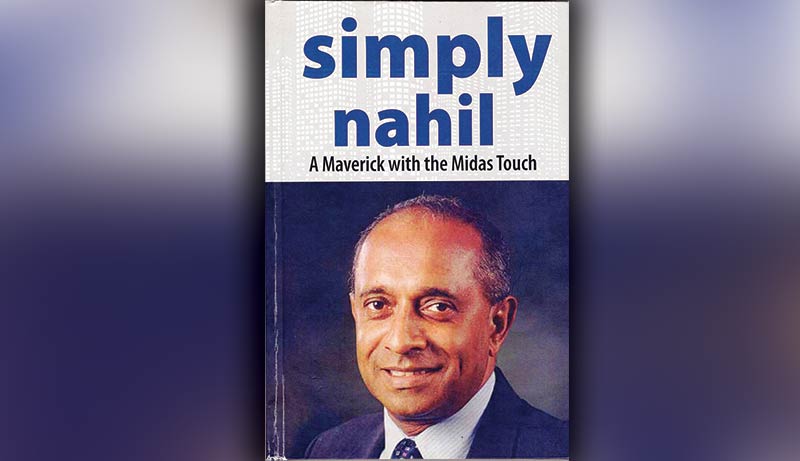
(Excerpted from Simply Nahil, a biography of business leader and philanthropist Nahil Wijesuriya described on the book cover as a “Maverick with the Midas touch)
During the period 1964-1967, in Nahil’s third year at Walkers (as a special apprentice), he firmly believed the Walkers engineering qualification was world-class, with the bonus of working in engineering workshops and going on board ships, which he enjoyed.
This was much-needed exposure for him personally since part of the training was ‘onboard’ ship work which was very interesting. The apprentice used this opportunity to do a little bit of side business –buying cigarettes and scotch from the sailors on board at duty-free prices and selling them outside, which was a regular thing.
During this period, he says, I would see my peers who had concluded their apprenticeship just ahead of me still cycling to their jobs. I thought, “darn this is not going to work for me.” He short-circuited the four-year course, doing it in three years, deciding to further his engineering studies in England.
His thought was, there was no way he was going to be biking it to the office on completion of his apprenticeship even though he owned a Vespa (scooter), a mini, and the Willies Aerolark, which he remembers riding and driving in sequence.
Nahil made his way to the British High Commission, got hold of the Universities Central Council on Admissions (UCCA) books, found 15 addresses, wrote all the addresses down, bought 15 aerogrammes and persuaded the Walkers Secretary to type out the same letter on all and mail them off.
September was an amazing month for Nahil. He mailed the letters, on the 5th and by the 15th he received the first reply saying ‘you appear to be qualified – please send your official application through your High Commissioner in the UK.’ His friend Dayantha’s dad, Mr. Wilmot Liyanage, a very close friend of his father, was the Chief Accountant at Radio Ceylon during the time Livy Wijemanne was Chairman.
Since Mr. Liyanage knew many influential people in the Government, Nahil handed him the letter he had received from the College in the UK. With this letter, he got Nahil’s passage approved, exchange 45/- GBP a month and all the necessary documentation. By September 20, he was in Leicester College, heading for his HND (Higher National Diploma) in Mechanical and Production Engineering studies.
As he recalls his time in the UK, he continues about his maiden voyage to the West. Before he left for the UK, he was sharing a room on a side lane off Bullers Road, Colombo 07, with his buddy, Premalal Gunasekera who captained St. Thomas’ College in cricket, his claim to fame being that under his captaincy they won the Royal-Thomian encounter which was the last time St. Thomas’ won, in a long time.
An annex in the same building was occupied by Ms. Enid Handunge, sister of the Olympic medal-winning boxer, a Trinitian, Leslie Handunge. She treated Premlal and Nahil like her sons. When he dropped in to say goodbye to her before leaving for the airport, being a great fan of Trinity College, Kandy, she was shocked that Nahil was not wearing his college tie. She pulled off the tie he was wearing and insisted he wore the college tie in her possession. He is glad he took her advice.
Bags packed, he confidently set off. He was flying on a BOAC VC10 aircraft. Arriving in London, just as he got to the arrival gate, a gentleman who was welcoming some foreign dignitaries, recognizing the tie came up to him, introduced himself as Jayantha Dhanapala and shook his hand, He was an old Trinitian, working as an Attache at the Ceylon High Commission in London, who later went on to be a high official at the UN. Aunty Enid was right. To date, Jayantha shares this little story with those around, whenever they meet.
Leicester College England
The year was late 1967 — met on arrival at Heathrow by Dayantha Liyanage, Nahil was driven in his Mini on the highway to his family home at 48, Glenhill Close, Finchley. He remembers being overwhelmed at the speed on the highway, which made him earnestly request Dayantha to slow down. He stayed overnight, leaving for Leicester College the next day.
An attack of food poisoning, probably due to something he ate on the flight, made his first night in the UK rather unpleasant. Dayantha’s mother was a wonderful lady, who made a fuss over him, going to the lengths of getting a doctor to the house to attend to him.
Setting aside his stomach issues, he had woken up early the following day and left to Leicester to start his HND in Mechanical and Production Engineering studies. Though he had been requested by the College to apply through the Ceylon High Commission, he had short-circuited the request by going directly to the College. It so happened that the day he arrived at the college was the day registrations were taking place.
The Registrar reviewed his papers and informed him that he should have submitted his application via the High Commission. Nahil then informed the gentleman that the letter he received from the College indicated that he appeared to be qualified, although the originals of the certificates had not been submitted. He presented the certified copies of the originals to the Registrar. Glancing through them the Registrar said: “Welcome! Your student life in the UK has just begun.”
The start of University comprised exhilarating days. As a freshman and foreign student, he was given preference to stay at Glenfield, which was a part of the campus, for one year, after which he lived in a house shared by six students at Loughborough Road. “Life was easy-going, carefree and uncomplicated. As students, we lived it to the fullest. The Beatles were big and so was Elvis. Rock ‘n’ roll was in full swing and the flower power culture was taking over the youth in the West; life was good, the world our oyster,” says Nahil with a look of melancholy that speaks of good times, sad times and great memories.
Two weeks into his stay in Glenfield, he received a letter from
his girlfriend Maya, with the news that she was getting married to a planter, a fellow Trinitian and acquaintance, Leelananda Madawela. “I felt so insulted,” says Nahil. She had also mentioned in her letter that they could be together in their next birth, which made him mad, sad and further insulted. An emotional wreck, he headed to the coffee machine in the students’ hall at Glenfield, poured out a burning hot cup of coffee and tried committing `coffee-side’! His biggest issue was that Lee had won. Such were the rules of the Kandyan dating game.
Nahil was the only foreigner in his class and the lecturer inquired if he could call him John, to which he replied, “Sorry Sir, you call me Nahil or nothing at all,” after which the lecturer questioned him on his ability to speak English, saying, “Your English is not bad for a foreigner. Where did you study it?” Nahil replied, “on the Colombo/London flight., Sir!” With this remark, Nahil fit into the class very well.
While in college Nahil would drive down to London every weekend and spend time with his friends Lakshman Umagiliya and Sunil Perera who shared a fantastic apartment opposite the Royal Lancaster Hotel — 14, Westbourne Street. Number 15 next to it was the Marsh House Hotel. The apartment belonged to Dr. Umagiliya, Lakshman’s father, who had left for Libya on receiving a lucrative offer he couldn’t turn down, handing over the flat to Lakshman.
The flat turned out to be `party central,’ a bachelor hangout and party place every weekend. To encourage more ladies to join the party they put up a poster on the notice board at the nurse’s quarters of St. Mary’s Paddington, which was round the corner of Westbourne Street, inviting the nurses to join the fun. To their amazement, 20 or more nurses made their way to the parties on weekends, with two of them eventually marrying two of his friends!
It was during this period that he invited his mother and younger sister on holiday to the UK, intending to take them around Europe. They flew into Frankfurt where a family friend’s son, Lakshman Jayasekera, was working at the airport. With his help, Nahil bought a VW, a nice old Beetle for the equivalent of 80 GBP in DMs. They travelled from Frankfurt to Vienna, Florence, Rome, Venice and past Lake Como through Switzerland to Paris.
Lake Como in Northern Italy in the Lombardy region is an upscale resort area known for its dramatic scenery, set against the foothills of the Alps. The lake is shaped like an upside down ‘Y’ with three slender tributaries that meet at the resort town of Bellagio. At the bottom of the south west branch lies the city of Como home to Renaissance architecture and a funicular (a vehicle which uses cable traction for movement on steeply-inclined slopes) that travels up to the mountain town of Brunate.
It is said that one should visit Lake Como at least once in their lifetime. Once they got to Paris they were joined by Bridget, Lakshman’s wife, and enjoyed excellent food in Paris since Bridget’s father was a chef at the Paris Hilton. While in Paris they drank no water, only wine. He remembers they had coffee at a cafe on Champs-Elysées surrounded by shops where the cost of a jacket was more than the cost of his VW in which they had travelled a few thousand miles.
En-route he realized that since it was summertime his mom and Kanthi had not seen any snow, therefore he took them to Austia that had a cable car going up into the mountains. Once they got up there they had a blast walking in the snow and messing around. Nahil recalls it was a great holiday, with lots of laughs, photographs and fun memories.
In anticipation of his mother and sister’s visit, he had rented out an apartment in Earl’s Court for the duration of their stay in the UK. After their return from Europe, they spent a few more days sight seeing in and around London, before returning to Sri Lanka. Unfortunately, Mahes (his other sister) had just started at Medical College and couldn’t join them.
Incidentally, he did not pay duty for his VW Beetle since it had German export documents and number plates. He used the car for one year, paid the taxes of GBP 12 and sold it to his classmate, Ken Garner for GBP 80/-. Come the following summer, his father called him brimming with excitement, insisting he wanted to do the same tour around Europe his wife and daughter had done, the previous year. Father and son commenced their tour once again in Germany, this time buying a more expensive VW Variant hatchback, driving the same route as on the previous trip.
While in college Nahil worked at the Ceylon Students Centre and later at Wimpy, a burger fast-food chain, where he worked in the very hot and steamy basement loading the dishwasher and dryer. There was a Sri Lankan female working there, with whom he kept all conversation restricted to Sinhalese and commended her for her ability to speak English; to which she replied, that she must have done some ‘merit’ in a previous life for this ability.
Later, during a visit to the Students Centre, she had heard him speaking to his friends in English. Aghast, with her hands on her hips, she had virtually screamed at him saying, “You are the type my mother warned me about…”
He drove his VW Variant in the UK with the export plates intact. This meant the vehicle was duty free. He says he never paid parking fines. Being lazy he used the windscreen wipers to flick the tickets off the screen. Finally, the parking wardens, by now wise to this little schemes, cello-taped the tickets to the side of his car, which he continued to ignore. His number was not traceable and to prosecute him they would have to trace his number in Germany – something that never happens. Loopholes like this were really abused by him.
There used to be a parking meter close to Selfridges where he worked for a short time. One morning as he parked his car at this meter. on a hunch, he experimented by inserting an engineered paper clip into the parking meter and it worked out brilliantly. The system jammed, awarding him a full day of free parking each working day, throughout his tenure at Selfridges.
Ten years later Maithra Rodrigo and Nahil were passing by a similar meter and as a dare, he tried the trick again: Voila! It worked.
The second VW Nahil bought in Germany was a left-hand drive car. After two years, just as he was about to leave the UK, he knew he would get much more value from the car if he converted it to a right-hand drive, which he did, outside on the street at 168, Holland Park where they lived. This was the modus operandi. He had Sri Lankan friends working at the Swiss Cottage VW dealership. He got a list of parts from them and where there was a left-hand drive option, there was an asterisk that indicated the options of the parts and the date of manufacture.
He got a list of about18 items from pedals, to the gasoline tank with a different shape. Taking the list to a scrapyard, where many cars of this model had been scrapped, he picked up all the bits and pieces for a pittance. The only thing he purchased from the dealer was the dashboard which had the meters. He cut it just under the windscreen lip and did not weld it but pop-riveted it, placed the rubber beading across it and spray painted it to get the same colour.
New parts are normally grey, therefore getting the correct colour was important. He bought a can of aerosol paint, sprayed the new parts, changed the meters by putting miles instead of kilometers, and did a test drive on the motorway because the safety aspect was very important. He drove full speed and tested the brakes and found it to be very steady and ready for sale.
He advertised the car, getting a positive response from an
English guy and a Sri Lankan, who turned up simultaneously to check the vehicle out. Nahil was not too keen to sell it to the Sri Lankan – a minor fault and he would be at Nahil’s doorstep whining. The two buyers starting arguing over who should get the car, till he cut them short telling both that the first to deposit the amount quoted into his account could have the car. The Sri Lankan offered him cash and the Englishman said, “Here’s my cheque. My cheque is as good as his cash.” Nahil tossed a coin, which fortunately the British guy won! It was a Friday and the guy wanted the car for the weekend, but Nahil was willing to hand over car only when the cheque was cashed and the transaction finalized.
His friend Shantha de Silva, who was with him, took him to the Lloyds Bank on Lower Regents Street along with the Englishman who withdrew the amount in cash and paid him. They signed the transfer the bonnet of the car. “As we were about to leave, he tells me the left-side view mirror of the car was missing. I had forgotten to fix it on the left,” says Nahil. He told him that’s the way it was when he got the car, followed by a quick “Sorry, I’ve got to go,” and took off, with Shantha driving him home.
Even as a young student the affirmation of his entrepreneurship and money-making skills was evident. He recounts that this was the time when a large population of Indians arrived in the UK from East Africa due to Idi Amin’s idiosyncrasies. Most of the Indian students in his college had their homes in London. With all his friends based in London, he would drive the 100 miles to London and back every weekend. In response to an advertisement he had placed in the college bulletin, among the many Indian students living on campus, there were three who joined him to London each weekend, paying him one pound per person, per trip.
A gallon of petrol cost 33 pence and this sweet deal, thanks to the Indians, guaranteed him a freebie both ways every weekend. A few weekends into this enterprise, one of them, a smart ass, lamented that one pound per person was far too much. Nahil then challenged the Indian to buy a gallon of petrol, place the can on the highway, sit on it and wish hard that it would magically take him to London. That shut the guy up and he continued his weekend trips to London with Nahil.
Tuula Rippati
One morning, climbing up the stairs with some groceries to Lakshman Umagiliya’s flat, he stopped dead in his tracks dazzled at the sight of a beautiful, busty blonde in a Cossack hat, making her way down. Gobsmacked, he left the groceries on the step to be retrieved later follow her. He just couldn’t get her off his mind. As fate would have it, She was back again a few days later. By now visibly smitten, he followed her to Lancaster Gate station, stood behind her in the queue and bought a ticket to her destination, Euston.
Heading into the same carriage, he sat beside her, striking up a conversation and admitting that he had followed her there to talk to her. In Euston he lazed around until she got back to the station and returned to Lancaster Gate with her, managing to get her name before she went up to the Marsh House Hotel next door.
On inquiring, she had given her name as Petruska, but when he called the hotel, he was informed that there was no one by that name. Determined, he rang again and this time around, described her to the receptionist as a beautiful lass from Finland. What he heard next was music to his ears. “Oh yes, that must be Tuula Rippati.” Excited he called her room, confessing that he was the guy she met on the tube.
Without wasting time on small talk over the phone, he invited her for a coffee. She reluctantly agreed and they had coffee that evening at the Finnish Club in Sussex Gardens. After the coffee, since it was Tuula’s first visit to London, he took her sightseeing to Trafalgar Square, Piccadilly Circus, London Bridge, Westminster and other places of interest around the city in his VW Beetle, ending the evening by taking her dancing to a club in the vicinity. They spent the night together. In his opinion, this was a major romantic conquest for him.
Their romance thrived. A few days later she confessed to him that he was the first non-white person she had ever been around with and by dating Nahil, she was ‘taking romance to a whole new level’. As things got emotionally serious between them, he helped to get her visa extended to stay in the UK as an ‘au pair,’ which allowed her to work at a school in Kent. A short time later they moved in together to 168, Holland Park Avenue in Notting Hill Gate. “Now I hope you are impressed by my chatterbility (sic) skills!”
Tuula, who initially was on vacation in London for two weeks, ended up staying with him for three years. They probably would have got married, he says, if not for his father, who after being introduced to Tuula remarked that culturally it would not work out for them.
During a recent chat with me about Tuula, he said he believed that if he had taken a stand and married Tuula, they probably would have still been together saving all three of his wives from heartache! “Que sera sera.”
Features
Minds and Memories picturing 65 years of Sri Lankan Politics and Society
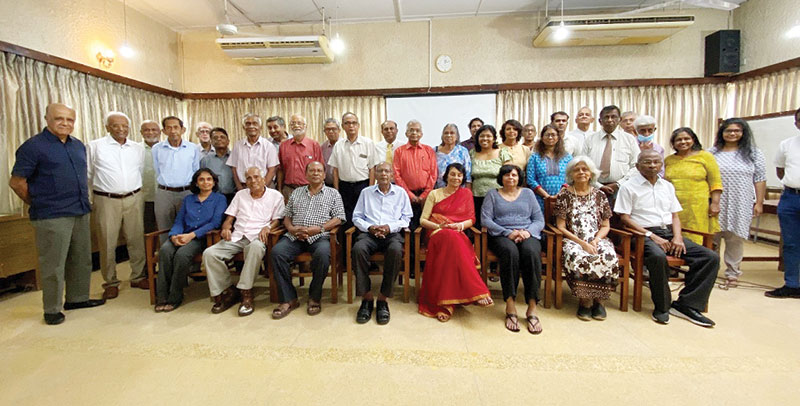
Last week I made mention of a gathering in Colombo to remember Kumar David, who passed away last October, as Comrade, Professor and Friend. The event was held on Saturday, April 5th, a day of double significance, first as the anniversary of the JVP insurrection on 5th April 1971, and now the occasion of the official welcome extended to visiting Indian Prime Narendra Modi by the still new JVP-NPP government. The venue was the Ecumenical Institute for Study and Dialogue (EISD) on Havelock Road, which has long been a forum for dialogues and discussions of topics ranging from religious ecumenism, Liberation Theology and Marxist politics. Those who gathered to remember Kumar were also drawn from many overlapping social, academic, professional and political circles that intersected Kumar’s life and work at multiple points. Temporally and collectively, the gathering spanned over six decades in the evolution of post-independence Sri Lanka – its politics, society and the economy.
Several spoke and recalled memories, and their contributions covered from what many of us have experienced as Sri Lankans from the early 1960s to the first two and a half decades of the 21st century. The task of moderating the discussion fell to Prof. Vijaya Kumar, Emeritus Professor of Chemistry at Peradeniya, who was a longtime friend of Kumar David at the university and a political comrade in the LSSP – especially in the Party’s educational and publication activities.
Vijaya Kumar recalled Kumar David’s contributions not only to Marxist politics but also to the popularization of Science that became a feature in several of KD’s weekly contributions to the Sunday Island and the Colombo Telegraph. Marshal Fernando, former and longtime Director of the EISD welcomed the participants and spoke of Kumar David’s many interactions with the Institute and his unflinching offer of support and advice to its activities. EISD’s current Director, Fr. Jayanath Panditharatne and his staff were extremely helpful.
Rohini David, Kumar’s wife of over 50 years, flew in specially for the occasion from Los Angeles and spoke glowingly of Kumar’s personal life as a husband and a father, and of his generosity for causes that he was committed to, not only political, but also, and more importantly, educational. An interesting nugget revealed by Rohini is the little known fact that Kumar David was actually baptized twice – possibly as a Roman Catholic on his father’s side, and as an Anglican on his mother’s side. Yet he grew to see an altogether different light in all of his adult life. Kumar’s father was Magistrate BGS David, and his maternal grandfather was a District Judge, James Joseph.
Kumar had an early introduction to politics as a result of his exposure to some of the political preparations for the Great Hartal of 1953. Kumar was 12 years old then, and the conduit was his step-father, Lloyd de Silva an LSSPer who was close to the Party’s frontline leaders. From a very young age, Kumar became familiar with all the leaders and intellectuals of the LSSP. Lloyd was known for his sharp wit and cutting polemics. One of my favourite lines is his characterization of Bala Tampoe as a “Lone Ranger in the Mass Movement.” Lloyd’s polemics may have rubbed on Kumar’s impressionable mind, but the more enduring effect came from Lloyd’s good collection of Marxist books that Kumar self-admittedly devoured as much as he could as a teenager and an undergraduate.
Electric Power and Politics
Early accounts of Kumar’s public persona came from Chris Ratnayake, Prof. Sivasegaram and Dr. K. Vigneswaran, all Kumar’s contemporaries at the Engineering Faculty that was then located in Colombo. From their university days in the early 1960s, until now, they have witnessed, been a part of and made their own contributions to politics and society in Sri Lanka. Chris, a former CEB and World Bank Electrical Engineer, was part of the Trotskyite LSSP nucleus in the Engineering Faculty, along with Bernard Wijedoru, Kumar David, Sivaguru Ganesan, MWW Dharmawardana, Wickramabahu Karunaratne and Chris Rodrigo. Of that group only Chris and MWW are alive now.
Chris gave an accurate outline of their political involvement as students, Kumar’s academic brilliance and his later roles as a Lecturer and Director of the CEB under the United Front Government. Chris also described Kumar’s later academic interest and professional expertise in the unbundling of power systems and opening them to the market. Even though he was a Marxist, or may be because of it, Kumar had a good understanding of the operation of the market forces in the electricity sector.
Chris also dealt at length on Sri Lanka’s divergent economic trajectories before and after 1977, and the current aftermath of the recent economic crisis. As someone who has worked with the World Bank in 81 countries and has had the experience of IMF bailout programs, Chris had both warning and advice in light of Sri Lanka’s current situation. No country, he said, has embarked on an economic growth trajectory by following standard IMF prescriptions, and he pointed out that countries like the Asian Tigers have prospered not by following the IMF programs but by charting their own pathways.
Prof. S. Sivasegaram and Dr. K. Vigneswaran graduated in 1964, one year after Kumar David, with first classes in Mechanical Engineering and Civil Engineering, respectively. Sivasegaram joined the academia like Kumar David, while Vigneswaran joined the Irrigation Department but was later drawn into the vortex of Tamil politics where he has been a voice of reason and a source for constructive alternatives. As Engineering students, they were both Federal Party supporters and were not aligned with Kumar’s left politics.
It was later at London Imperial College, Sivasegaram said, he got interested in Marxism and he credited Kumar as one of the people who introduced him to Marxism and to anti-Vietnam protests. But Kumar could not persuade Sivasegaram to be a Trotskyite. Sivasegaram has been a Maoist in politics and apart from his Engineering, he is also an accomplished poet in Tamil. Vigneswaran recalled Kumar’s political involvement as a Marxist in support of the right of self-determination of the Tamils and his accessibility to Tamil groups who were looking for support from the political left.
K. Ramathas and Lal Chandranath were students of Kumar David at Peradeniya, and both went on to become established professionals in the IT sector. Ramathas passionately recalled Kumar’s effectiveness as a teacher and described his personal debt of gratitude for helping him to get a lasting understanding of the concept and application of power system stability. This understanding has helped him deal with other systems, said Ramathas, even as he bemoaned the lack of understanding of system stability among young Engineers and their failure to properly explain and address recurrent power failures in Sri Lanka.
Left Politics without Power
The transition from Engineering to politics in the discussion was seamlessly handled by veterans of left politics, viz., Siritunga Jayasuriya, Piyal Rajakaruna and Dishan Dharmasena, and by Prof. Nirmal Dewasiri of the History Department at the University of Colombo. Siritunga, Piyal and Dishan spoke to the personal, intellectual and organizational aspects of Kumar David in the development of left politics after Kumar David, Vasudeva Nanayakkara and Bahu were no longer associated with the LSSP. Dewasiri reflected on the role of the intellectuals in left political parties and the lost to the left movement as a whole arising from the resignation or expulsion of intellectuals from left political organizations.
While Kumar David’s academic and professional pre-occupation was electric power, pursuing power for the sake of power was not the essence of his politics. That has been the case with Bahu and Sivasegaram as well. They naturally had a teaching or educational role in politics, but they shared another dimension that is universally common to Left politics. Leszek Kolakowski, the Polish Marxist who later became the most celebrated Marxist renegade, has opined that insofar as leftists are generally ahead of their times in advocating fundamental social change and promoting ideas that do not resonate with much of the population, they are unlikely to win power through electoral means.
Yet opposition politics predicated on exposing and decrying everything that is wrong with the system and projecting to change the system is fundamentally the most moral position that one can take in politics. So much so it is worth pursuing even without the prospect of power, as Hector Abhayavardhana wrote in his obituaries for LSSP leaders like NM Perera and Colvin R de Silva. By that token, the coalition politics of the 1960s could be seen as privileging a shared parliamentary path to power while dismissing as doctrinaire the insistence on a sole revolutionary path to power.
The two perspectives clashed head on and splintered the LSSP at its historic 1964 Conference. Kumar David and Lal Wijenayake were the youngest members at that conference, and the political genesis of Kumar David and others at the Engineering faculty that Chris Ratnayake outlined was essentially post-coalition politics. In later years, Vasudeva Nanayakkara, Bahu and Kumar David set about creating a left-opposition (Vama) tendency within the LSSP.
This was considered a superior alternative to breaking away from the Party that had been the experience of 1964. Kumar David may have instinctively appreciated the primacy of the overall system stability even if individual components were getting to be unstable! But their internal efforts were stalled, and they were systematically expelled from the Party one by one. Kumar David recounted these developments in the obituary he wrote for Bahu.
As I wrote last week, after 1977 and with the presidential system in place, the hitherto left political parties and organizations generally allied themselves with one or the other of the three main political alliances led by the SLFP, the SLPP and even the UNP. A cluster of them gravitated to the NPP that has been set up by the JVP under the leadership of Anura Kumara Dissanayake. Kumar David supported the new JVP/NPP initiative and was optimistic about its prospects. He wrote positively about them in his weekly columns in the Sunday Island and the Colombo Telegraph.
The Social Circles of Politics
Sometime in late 2006, Rohan Edrisinha introduced Kumar and me to Rajpal Abeynayake, who was then the Editor of the Sunday Observer, for the purpose of writing weekly columns for the Paper. Bahu was already writing for the Sunday Observer and for almost an year, Bahu, Kumar and I were Sunday Island columnists, courtesy of Rajpal Abeynayake. In 2007, Prof. Vijaya Kumar introduced us to Manik de Silva, already the doyen of Sri Lanka’s English medium editors, and Kumar and I started writing for the Sunday Island edited by Manik. It has been non-stop weekly writing a full 18 years. For a number of years, we have also been publishing modified versions of our articles in the Colombo Telegraph, the online journal edited by the inimitable Uvindu Kurukulasuriya.
Writing mainstream rekindled old friendships and created new ones. It was gratifying to see many of them show up at the celebration of life for Kumar. That included Rajpal Abeynayake, Bunchy Rahuman, Gamini Kulatunga, Ranjith Galappatti, Tissa Jayatilaka, NG (Tanky) Wickremeratne, and Manik de Silva. Vijaya Chandrasoma, who unfortunately could not attend the meeting, was particularly supportive of the event along with Tanky and Ramathas. Tissa and Manik spoke at the event and shared their memories of Kumar.
Dr. Santhushya Fernando of the Colombo Medical Faculty provided organizational support and created two superb video montages of Kumar’s life in pictures to background theme songs by Nat King Cole and Frank Sinatra. Manoj Rathnayake produced a Video Recording of the event.
In a quirky coincidence, five of those who attended the event, viz. Manik de Silva, Vijaya Kumar, Chris Ratnayake, S. Sivasegaram and K. Vigneswaran were all classmates at Royal College. On a personal note, I have been associated with every one of them in one way or another. Chris and I were also Engineers at the Hantana Housing Development in the early 1980s, for which the late Suren Wickremesinghe and his wife Tanya were the Architects. And Suren was in the same Royal College class as the other five mentioned here.
In the last article he wrote before his passing, Kumar David congratulated Anura Kumara Dissanayake for his magnificent political achievement and expressed cautious optimism for the prospects under an NPP government. Many in the new government followed Kumar David’s articles and opinions and were keen to participate in the celebration of life that was organized for him. That was not going to be possible anyway with the visit of Prime Minister Modi falling on the same day. Even so, Prof. Sunil Servi, Minister of Buddha Sasana, and Religious and Cultural Affairs, was graciously present at the event and expressed his appreciation of Kumar David’s contributions to Sri Lankan politics and society.
by Rajan Philips
Features
53 Years of HARTI- Looking Back and Looking Ahead
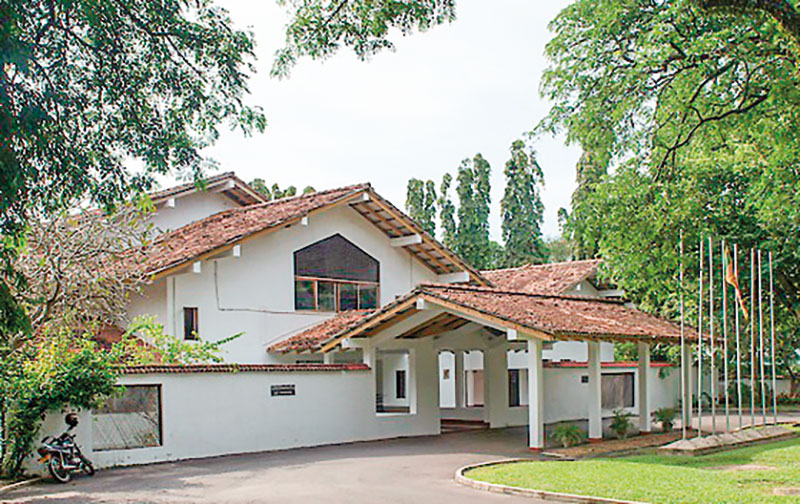
C. Narayanasuwami, the first Director of the then Agrarian Research and Training Institute (ARTI).
I am delighted to be associated with the fifty third anniversary celebrations of HARTI. I cherish pleasant memories of the relentless efforts made as the First Director to establish, incorporate, develop, direct, and manage a nascent institute in the 1970s amidst many challenges. The seven-year period as Director remains as the most formidable and rewarding period in my career as a development professional. I have been fortunate to have had a continuing relationship with HARTI over the last five decades. It is rarely that one who played a significant role in the establishment and growth of an institution gets an opportunity to maintain the links throughout his lifetime and provide messages on the completion of its fifth (I was still the director then), the 15th, 50th and 53rd anniversaries.
I had occasion also to acknowledge the contribution of the Institute on its 46th year when I released my book, ‘Managing Development: People, Policies and Institutions’ using HARTI auditorium and facilities, with the able support of the then director and staff who made the event memorable. The book contains a special chapter on HARTI.
On HARTI’s 15th anniversary I was called upon to offer some thoughts on the Institute’s future operations. The following were some of my observations then, “ARTI has graduated from its stage of infancy to adolescence….Looking back it gives me great satisfaction to observe the vast strides it has made in developing itself into a dynamic multidisciplinary research institution with a complement of qualified and trained staff. The significant progress achieved in new areas such as marketing and food policy, data processing, statistical consultancies, information dissemination and irrigation management, highlights the relevance and validity of the scope and objectives originally conceived and implemented”.
It may be prudent to review whether the recommendations contained in that message, specifically (a) the preparation of a catalogue of research findings accepted for implementation partially or fully during policy formulation, (b) the relevance and usefulness of information services and market research activities in enhancing farmer income, and (c) the extent to which the concept of interdisciplinary research- a judicious blend of socio-economic and technical research considered vital for problem-oriented studies- was applied to seek solutions to problems in the agricultural sector.
The thoughts expressed on the 15th anniversary also encompassed some significant management concerns, specifically, the need to study the institutional capabilities of implementing agencies, including the ‘human factor’ that influenced development, and a critical review of leadership patterns, management styles, motivational aspects, and behavioural and attitudinal factors that were considered vital to improve performance of agrarian enterprises.
A review of HARTI’s current operational processes confirm that farmer-based and policy-based studies are given greater attention, as for example, providing market information service for the benefit of producers, and undertaking credit, microfinance, and marketing studies to support policy changes.
The changes introduced over the years which modified the original discipline-based research units into more functional divisions such as agricultural policy and project evaluation division, environmental and water resources management division, and agricultural resource management division, clearly signified the growing importance attached to functional, action-oriented research in preference to the originally conceived narrowly focused discipline-based research activities.
HARTI has firmly established its place as a centre of excellence in socio-economic research and training with a mature staff base. It is pertinent at this juncture to determine whether the progress of HARTI’s operations was consistently and uniformly assessed as successful over the last five decades.
Anecdotal evidence and transient observations suggest that there were ups and downs in performance standards over the last couple of decades due to a variety of factors, not excluding political and administrative interventions, that downplayed the significance of socio-economic research. The success of HARTI’s operations, including the impact of policy-based studies, should be judged on the basis of improved legislation to establish a more structured socio-economic policy framework for agrarian development.
Looking Ahead
Fifty-three years in the life of an institution is substantial and significant enough to review, reflect and evaluate successes and shortcomings. Agrarian landscapes have changed over the last few decades and national and global trends in agriculture have seen radical transformation. Under these circumstances, such a review and reflection would provide the basis for improving organisational structures for agricultural institutions such as the Paddy Marketing Board, development of well-conceived food security plans, and above all, carefully orchestrated interventions to improve farmer income.
New opportunities have arisen consequent to the recent changes in the political horizon which further validates the role of HARTI. HARTI was born at a time when Land Reform and Agricultural Productivity were given pride of place in the development programs of the then government. The Paddy Lands Act provided for the emancipation of the farming community but recent events have proven that the implementation of the Paddy Lands Act has to be re-looked at in the context of agricultural marketing, agricultural productivity and income generation for the farming community.
Farmers have been at the mercy of millers and the price of paddy has been manipulated by an oligopoly of millers. This needs change and greater flexibility must be exercised to fix a guaranteed scale of prices that adjust to varying market situations, and provide adequate storage and milling facilities to ensure that there is no price manipulation. It is time that the Paddy Lands Act is amended to provide for greater flexibility in the provision of milling, storage and marketing services.
The need for restructuring small and medium scale enterprises (SMEs) recently announced by the government warrants greater inputs from HARTI to study the structure, institutional impediments and managerial constraints that inflict heavy damages leading to losses in profitability and organisational efficiency of SMEs.
Similarly, HARTI should look at the operational efficiency of the cooperative societies and assess the inputs required to make them more viable agrarian institutions at the rural level. A compact research exercise could unearth inefficiencies that require remedial intervention.
With heightened priority accorded to poverty alleviation and rural development by the current government, HARTI should be in the forefront to initiate case studies on a country wide platform, perhaps selecting areas on a zonal basis, to determine applicable modes of intervention that would help alleviate poverty.
The objective should be to work with implementing line agencies to identify structural and institutional weaknesses that hamper implementation of poverty reduction and rural development policies and programs.
The role played in disseminating marketing information has had considerable success in keeping the farming community informed of pricing structures. This should be further expanded to identify simple agricultural marketing practices that contribute to better pricing and income distribution.
HARTI should consider setting up a small management unit to provide inputs for management of small-scale agrarian enterprises, including the setting up of monitoring and evaluation programs, to regularly monitor and evaluate implementation performance and provide advisory support.
Research and training must get high level endorsement
to ensure that agrarian policies and programs constitute integral components of the agricultural development framework. This would necessitate a role for HARTI in central planning bodies to propose, consider and align research priorities in line with critical agricultural needs.
There is a felt need to establish links with universities and co-opt university staff to play a role in HARTI research and training activities-this was done during the initial seven-year period. These linkages would help HARTI to undertake evaluative studies jointly to assess impacts of agrarian/agricultural projects and disseminate lessons learned for improving the planning and execution of future projects in the different sectors.
In the overall analysis, the usefulness of HARTI remains in articulating that research and analysis are crucial to the success of implementation of agrarian policies and programs.
In conclusion, let us congratulate the architects and the dynamic management teams and staff that supported the remarkable growth of HARTI which today looks forward to injecting greater dynamism to build a robust institution that would gear itself to meeting the challenges of a new era of diversified and self-reliant agrarian society. As the first director of the Institute, it is my wish that it should grow from strength to strength to maintain its objectivity and produce evidence-based studies that would help toward better policies and implementation structures for rural transformation.
Features
Keynote Speech at the Launch of The Ceylon Journal, by Rohan Pethiyagoda
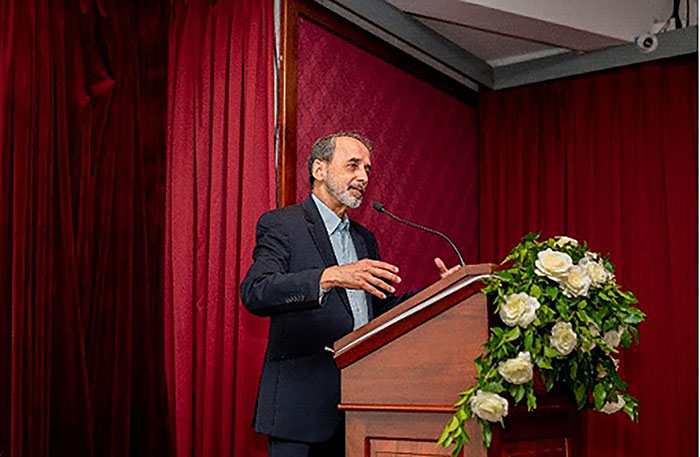
“How Rubber Shaped our Political Philosophy”
The Ceylon Journal was launched last August. Its first issue is already out of print. Only a handful of the second issue covering new perspectives of history, art, law, politics, folklore, and many other facets of Sri Lanka is available. To reserve your very own copy priced Rs. 2000 call on 0725830728.
Congratulations, Avishka [Senewiratne]. I am so proud of what you have done. Especially, Ladies and Gentlemen, to see and hear all of us stand up and actually sing the National Anthem was such a pleasure. Too often on occasions like this, the anthem is played, and no one sings. And we sang so beautifully this evening that it brought tears to my eyes. It is not often we get to think patriotic thoughts in Sri Lanka nowadays: this evening was a refreshing exception.
I’m never very sure what to say on an occasion like this, in which we celebrate history, especially given that I am a scientist and not a historian. It poses something of a challenge for me. Although we are often told that we must study history because it repeats itself, I don’t believe it ever does. But history certainly informs us: articles such as those in The Ceylon Journal, of which I read an advance copy, help us understand the context of our past and how it explains our present.
I want to take an example and explain what I am on about. I’m going to talk about rubber. Yes rubber, as in ‘eraser’, and how it crafted our national political identity, helping, even now seven decades later, to make ‘capitalism’ a pejorative.
As I think you know already, rubber came into general use in the middle of the 19th century. Charles Macintosh invented the raincoat in 1824 by placing a thin sheet of rubber between two sheets of fabric and pressing them together. That invention transformed many things, not least warfare. Just think of Napoleon’s invasion of Russia in the winter of 1812. His troops did that without any kind of waterproof clothing. Some 200,000 of them perished, not from bullets but from hypothermia. Waterproof raincoats could have saved thousands of lives. Not long after rubber came to be used for waterproofing, we saw the first undersea telegraph cable connecting Europe to North America being laid in the 1850s. When the American civil war broke out in 1860, demand for rubber increased yet further: the troops needed raincoats and other items made from this miracle material.
At that time rubber, used to be collected from the wild in the province of Pará in Northern Brazil, across which the Amazon drains into the Atlantic. In 1866, steamers began plying thousands of kilometres upriver, to return with cargoes of rubber harvested from the rainforest. Soon, the wild trees were being tapped to exhaustion and the sustainability of supply became doubtful.
Meanwhile, England was at the zenith of its colonial power, and colonial strategists thought rather like corporate strategists do today. The director of the Kew Gardens at the time, Joseph Hooker, felt there might be one day be a greater potential for rubber. He decided to look into the possibility of cultivating the rubber tree, Hevea brasiliensis, in Britain’s Asian colonies. So, he dispatched a young man called Henry Wickham to the Amazon to try to secure some seeds. In 1876, Wickham returned to Kew with 70,000 rubber seeds. These were planted out in hothouses in Kew and by the end of that year, almost 2000 of them had germinated.
These were dispatched to Ceylon, only a few weeks’ voyage away now, thanks to steamships and the Suez Canal. The director of the Peradeniya Botanic Garden at the time was George Henry Kendrick Thwaites, a brilliant systematic botanist and horticulturalist. Thwaites received the seedlings and had to decide where to plant them. He read the available literature—remember, this was 1876: there was no internet—and managed to piece together a model of the climatic conditions in the region of the Amazonian rainforest to which rubber was native. He decided that the plants would need an elevation of less than 300 metres and a minimum annual rainfall of at least 2000mm. In other words, the most suitable region for rubber would be an arc about 30 kilometres wide, extending roughly from Ambalangoda to Matale. Despite his never having seen a rubber plant until then, astonishingly, he got it exactly right.
Thwaites settled on a site in the middle of the arc, at Henarathgoda near Gampaha. That became the world’s first rubber nursery: the first successful cultivation of this tree outside Brazil. The trees grew well and, eight years later, came into seed. Henry Trimen, Thwaites’ successor, used the seeds to establish an experimental plantation near Polgahawela and also shared seeds with the Singapore Botanic Garden. Those would later become the foundation of the great Malaysian rubber industry.
But up to that time, Sri Lanka’s rubber plantation remained a solution looking for a problem. Then, in 1888, the problem arrived, and from a completely unexpected quarter: John Dunlop invented the pneumatic tire. Soon, bicycles came to be fitted with air-filled tires, followed by motorcars. In 1900, the US produced just 5,000 motorcars; by 1915, production had risen to half a million. The great rubber boom had begun.
Meanwhile, the colonial administration in Ceylon had invited investors to buy land and start cultivating rubber to feed the growing international demand. But by the early 1890s, three unusual things had happened. First, with the collapse of the coffee industry in the mid-1870s, many British investors had been bankrupted. Those who survived had to divert all their available capital into transitioning their failing coffee plantations into tea. They were understandably averse to risk. As a result, the British showed little interest in this strange tree called rubber that had been bought from Brazil.
Second, a native Sri Lankan middle class had by then emerged. The Colebrooke-Cameron reforms had led to the establishment of the Royal academy, later Royal College, by 1835. Other great schools followed in quick succession. From the middle of the 19th century, it was possible for Sri Lankans to get an education and get employment in government service, become professionals, doctors, lawyers, engineers, civil servants, clerks, and so on. And so, by the 1890s, a solid native middle class had emerged. The feature that defines a middle class, of course, is savings, and these savings now came to be translated into the capital that founded the rubber industry.
Third, the British had by then established a rail and road network and created the legal and commercial institutions for managing credit and doing business—institutions like banks, financial services, contract law and laws that regulated bankruptcy. They had made the rules, but by now, Sri Lankans had learned to play the game. And so, it came to be that Sri Lankans came to own a substantial part of the rubber-plantation industry very early in the game. By 1911, almost 200,000 acres of rubber had been planted and world demand was growing exponentially.
In just one generation, investors in rubber were reaping eye-watering returns that in today’s money would equate to Rs 3.6 million per acre per year. It was these people who, together with the coconut barons, came to own the grand mansions that adorn the poshest roads in Cinnamon Gardens: Ward Place, Rosmead Place, Barnes Place, Horton Place, and so on. There was an astonishingly rapid creation of indigenous wealth. By 1911, the tonnage at shipping calling in Sri Lankan ports—Colombo and Trincomalee—exceeded nine million tons, making them collectively the third busiest in the British Empire and the seventh busiest in the world. By comparison, the busiest port in Europe is now Rotterdam, which ranks tenth in the world.
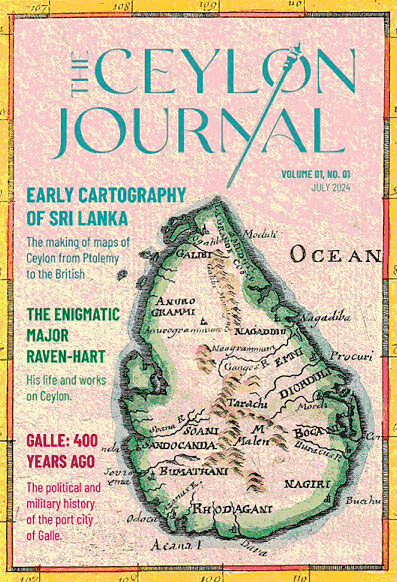 We often blame politicians for things that go wrong in our country and God knows they are responsible for most of it. But unfortunately for us, the first six years of independence, from 1948 to 1954, were really unlucky years for Sri Lanka. As if successive failed monsoons and falling rice crops weren’t bad enough, along came the Korean war. In the meantime, the Sri Lankan people had got used to the idea of food rations during the war and they wanted rations to be continued as free handouts. Those demands climaxed in the ‘Hartal’ of 1953, a general strike demanding something for nothing. Politicians were being forced to keep the promises they had made when before independence, that they would deliver greater prosperity than under the British.
We often blame politicians for things that go wrong in our country and God knows they are responsible for most of it. But unfortunately for us, the first six years of independence, from 1948 to 1954, were really unlucky years for Sri Lanka. As if successive failed monsoons and falling rice crops weren’t bad enough, along came the Korean war. In the meantime, the Sri Lankan people had got used to the idea of food rations during the war and they wanted rations to be continued as free handouts. Those demands climaxed in the ‘Hartal’ of 1953, a general strike demanding something for nothing. Politicians were being forced to keep the promises they had made when before independence, that they would deliver greater prosperity than under the British.
So, by 1949, D. S. Senanayake was forced to devalue the rupee, leading to rapid price inflation. Thankfully we didn’t have significant foreign debt then, or we might have had to declare insolvency much earlier than we finally did, in 2022. And then, because of failing paddy harvests, we were forced to buy rice
from China, which was in turn buying our rubber. But as luck would have it, China entered the Korean war, causing the UN, at the behest of the US, to embargo rubber exports to China.
This placed the D. S. Senanayake and John Kotelawala governments in an impossible predicament. There was a rice shortage; people were demanding free rice, and without rubber exports, there was no foreign exchange with which to buy rice. Kotelawala flew to Washington, D.C., to meet with President Eisenhower and plead for either an exemption from the embargo or else, for the US to buy our rubber. Despite Sri Lanka having provided rubber to the Allies at concessionary prices during the war and having supported the Allies, Eisenhower refused. British and American memories were short indeed. In India, Mahatma Gandhi and the Congress Party had chosen the moment, in August 1942 when Japan invaded Southeast Asia and were poised to invade Bengal, to demand that the British quit India, threatening in the alternative that they would throw their lot in with the Japanese. The Sri Lankan government, by contrast, had stood solidly by the Allies. But now, those same allies stabbed the fledgling nation in the chest. Gratitude, it seemed, was a concept alien to the West.
In these circumstances, Sri Lanka had no choice but to break the UN embargo and enter into a rice-for-rubber barter agreement with China. This resulted not only in the US suspending aid and the supply of agricultural chemicals to Sri Lanka, but also invoking the Battle Act and placing restrictions on US and UK ships calling at the island’s ports.
Understandably, by 1948, Sri Lankans entertained a strong disdain for colonialism. With the Cold War now under way, the USSR and China did all they could to split countries like Sri Lana away not just from their erstwhile colonial masters but also the capitalist system. If any doubt persisted in the minds of Sri Lankan politicians, Western sanctions put an end to that. The country fell into the warm embrace of the communist powers. China and the USSR were quick to fill the void left by the West, and especially in the 1950s, there was good reason to believe that the communist system was working. The Soviet economy was seeing unprecedented growth, and that decade saw them producing hydrogen bombs and putting the first satellite, dog and man in space.
As a consequence of the West’s perfidy in the early 1950s, ‘Capitalism’ continues to have pejorative connotations in Sri Lanka to this day. And it resulted in us becoming more insular, more inward looking, and anxious to assert our nationalism even when it cost us dearly.
Soon, we abolished the use of English, and we nationalized Western oil companies and the plantations. None of these things did us the slightest bit of good. We even changed the name of the country in English from Ceylon to Sri Lanka. Most countries in the world have an international name in addition to the name they call themselves. Sri Lanka had been ‘Lanka’ in Sinhala throughout the colonial period, even as its name had been Ceylon in English. The Japanese don’t call themselves Japan in their own language, neither do the Germans call themselves Germany. These are international names for Nihon and Deutschland, just like Baharat or Hindustan is what Indians call India. But we insisted that little Sri Lanka will assert itself and insist what the world would call us, the classic symptom of a massive inferiority complex. While countries like Singapore built on the brand value of their colonial names, we erased ours from the books. Now, no one knows where Ceylon tea or Ceylon cinnamon comes from.
Singapore is itself a British name: it should be Sinha Pura, the Lion City, a Sanskrit name. But Singapore values its bottom line more than its commitment to terminological exactitude. Even the name of its first British governor, Sir Stamford Raffles, has become a valued national brand. But here in Sri Lanka, rather than build on our colonial heritage, not the least liberal values the British engendered in us, together with democracy and a moderately regulated economy, we have chosen to deny it and seek to expunge it from our memory. We rejected the good values of the West along with the bad: like courtesy, queuing, and the idea that corruption is wrong.
We have stopped fighting for the dignity of our land, and I hope that as you read the articles in The Ceylon Journal that are published in the future, we will be reminded time and time again of the beautiful heritage of our country and how we can once again find it in ourselves to be proud of this wonderful land.
-
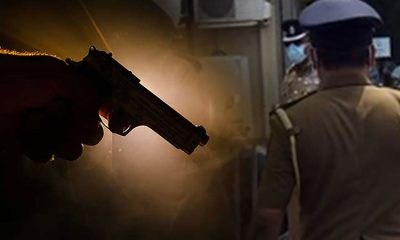
 News5 days ago
News5 days agoSuspect injured in police shooting hospitalised
-
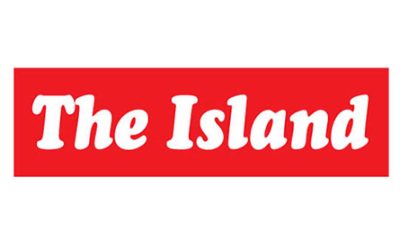
 Features6 days ago
Features6 days agoRobbers and Wreckers
-
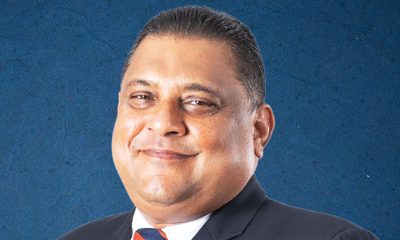
 Business6 days ago
Business6 days agoBhathiya Bulumulla – The Man I Knew
-
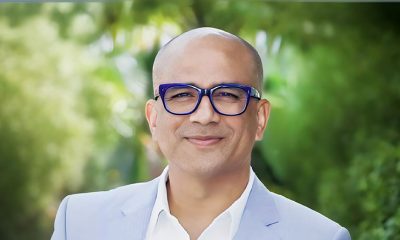
 Business5 days ago
Business5 days agoSanjiv Hulugalle appointed CEO and General Manager of Cinnamon Life at City of Dreams Sri Lanka
-
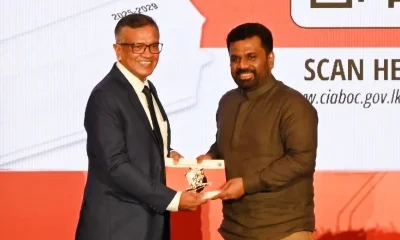
 Business7 days ago
Business7 days agoNational Anti-Corruption Action Plan launched with focus on economic recovery
-

 Features4 days ago
Features4 days agoLiberation Day tariffs chaos could cause permanent damage to US economy, amid global tensions
-
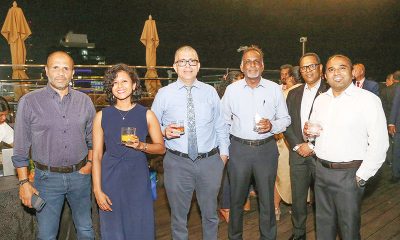
 Business4 days ago
Business4 days agoMembers’ Night of the Sri Lanka – Russia Business Council of The Ceylon Chamber of Commerce
-
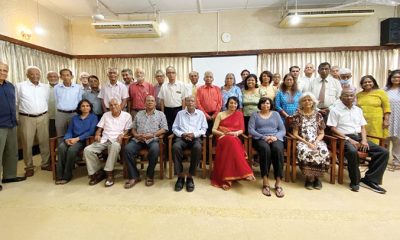
 Features4 days ago
Features4 days agoMinds and Memories picturing 65 years of Sri Lankan Politics and Society











